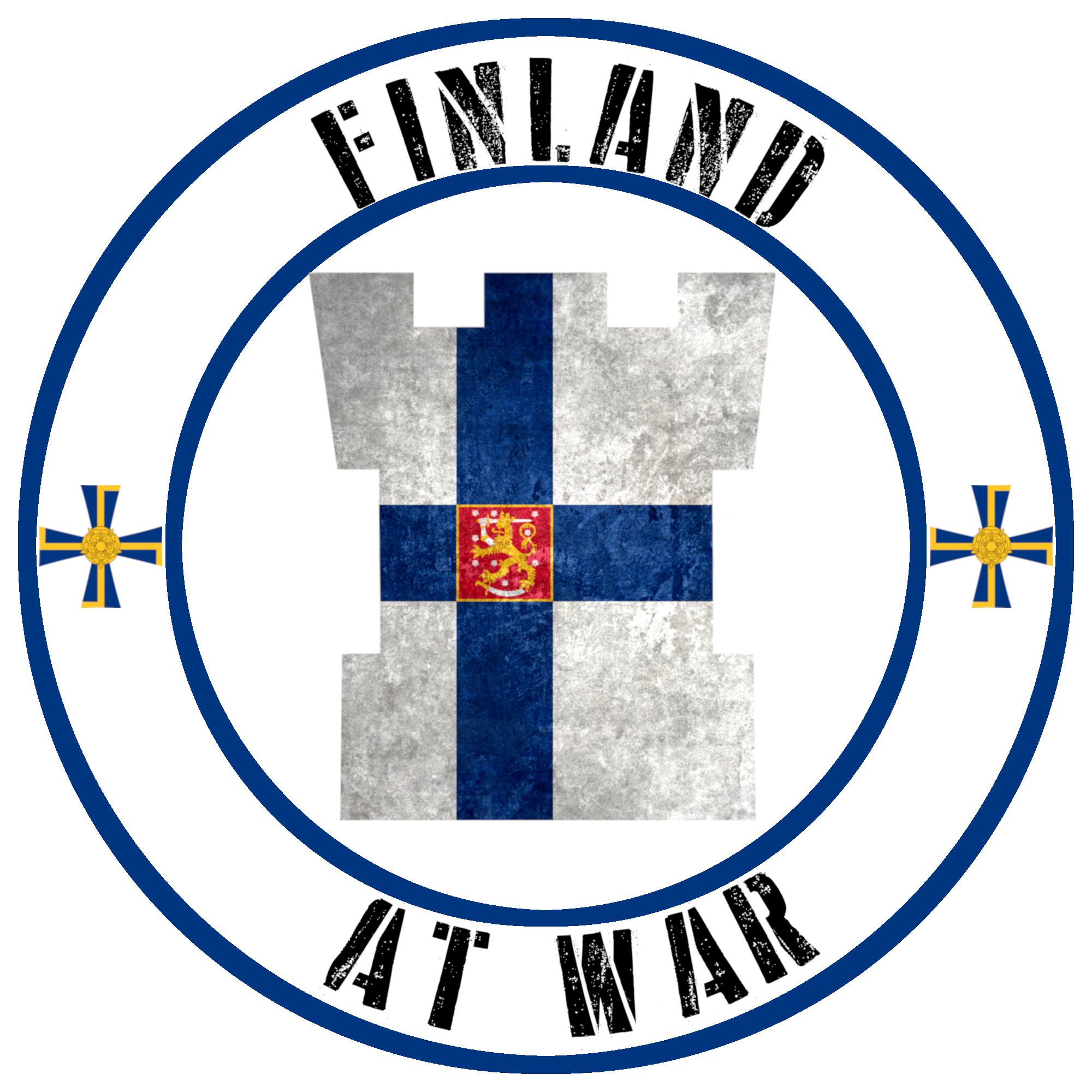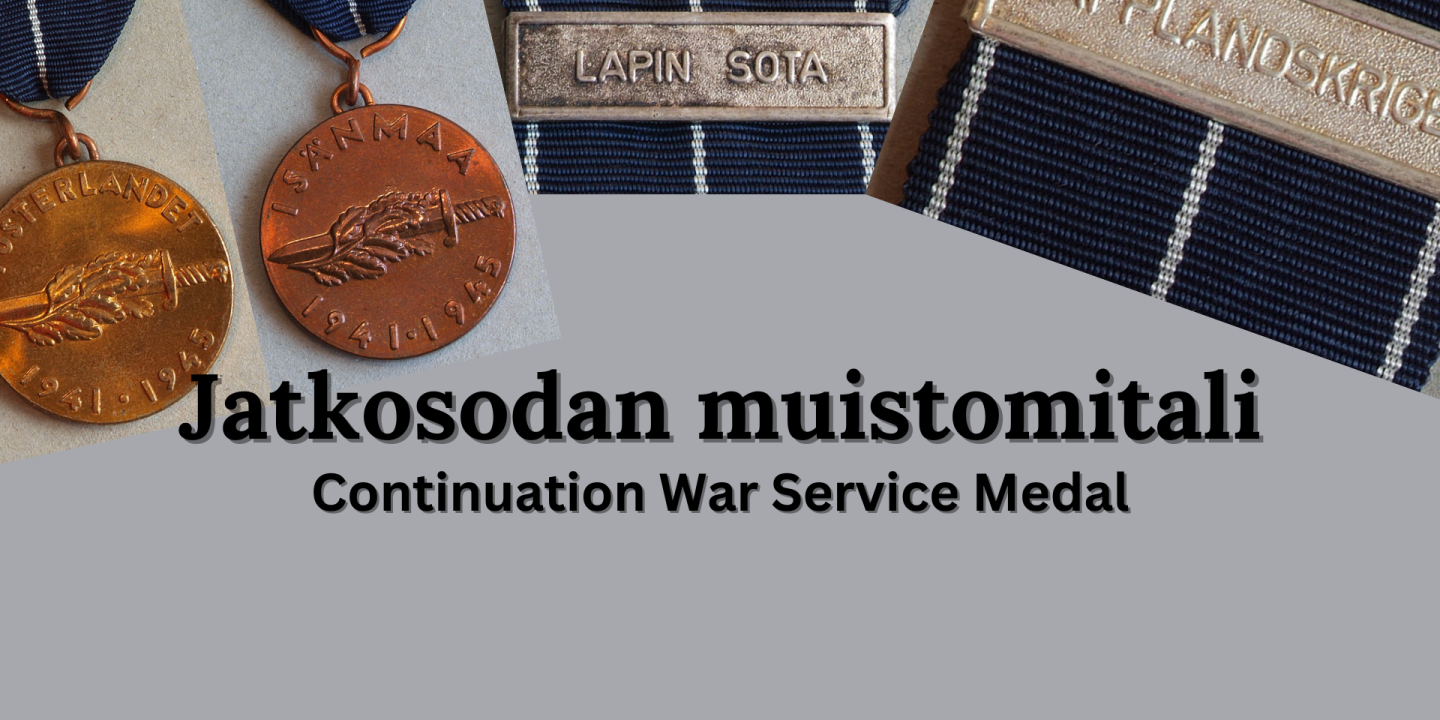Jatkosodan muistomitali
Continuation War Service Medal

Description: Bronze
Observe: A bayonet wreathed in oak leaves in the centre. The dates “1941-1945” and the inscription “ISÄNMAA” or “FOSTERLANDET” (Fatherland in Finnish and Swedish respectively) around the outer edges.
Reverse: The Finnish Coat of Arms (1920 variant)
Ribbon: 32mm wide in dark blue with two 2mm white vertical strips and one 1mm central white stripe.
Suspension: Bronze ring through which another bronze ring is attached
Clasp: 32mm wide and 8mm high silver bar with the raised inscription “LAPIN SOTA” or “LAPPLANDSKRIGET” (Lapland War in Finnish and Swedish respectively)
Award Criteria: Awarded to any Finnish citizen or a foreign person who had participated in the war or otherwise acted for the benefit of national defence during the period between 25th June 1941 and 27th April 1945.
Established: 24th May 1957
Status: Discontinued in 1992
The Continuation War Service Medal was established by President Urho Kekkonen on the 24th May 1957. It was authorised to be awarded to any citizen or foreigner who served within the Defences Forces between 25th June 1941 and 27th April 1945. This included members of the Pikku-Lotta or Sotilaspoika organisations, which were under the age of 18, as they operated under the auspices of the Home Front. In 1987, President Mauno Koivisto authorised the use of the Lapland War clasp. This was awarded to persons who participated in military operations in Lapland between 15th September 1944 and 27th April 27 1945.
The application process required the qualifying individual to submit their application to local military districts. The medal would be awarded with a certificate containing a facsimile signature of President Urho Kekkonen.
Appearance
Designed by Jaeger Captain Lauri Leppänen. The medal contains several symbols that hold importance within Finnish military culture. The bayonet represents the military and war, with the oak leaves encompassing it being a sign of courage, honour and sacrifice. The ribbon’s colours reflect those of the flag, helping to reinforce the idea that the Continuation and Lapland wars were fought for Finland’s independence. However, the three white stripes also represent home, religion and fatherland, important symbols for the Finnish people.
The reverse of the medal displays the traditional Coat of Arms of Finland, which goes back to 1580 (but the medal uses the 1920 version). It is argued that the nine roses represent the nine historical provinces of Finland, but this is still up for debate. The lion with a sword comes from Sweden and as you see it is trampling upon a curved sword, the symbolism showing Finland as the barrier between the ‘hordes of the East’.
Collecting and Status Today
The medal was discontinued at the end of 1992, no longer being awarded. It is still authorised for wear by those who hold it, appearing in the table of Order of Wear after the Winter War Service Medal and before the Minesweeping Medal.
Due to the large number of participants in the Continuation War, there is a large number of the medal available for collection. The standard version is the easiest to acquire, being generally priced between €20-€40 depending upon the condition. The clasp can add up to another €10, especially for ones that aren’t tarnished. It is rarer to come across the accompanying certificate, but they can fetch between €10-€50 depending upon their condition.
Despite them being fairly common, they still are worth adding to any collection as part of Finland’s history and evolving honours system.
Sources
Tiainen, Jani. Suomen kunniamerkit: The orders, decorations and medals of Finland (Apali Oy, 2010)
Finnish regulation regarding the Continuation War Medal
Regulation regarding the Lapland War clasp
The Oak Leaf Association’s page on medals
I would like to thank Adrianna who recently contacted me regarding a gift of a Continuation War Medal she received. Her questions about the medal and its symbolism inspired me to write this article.


